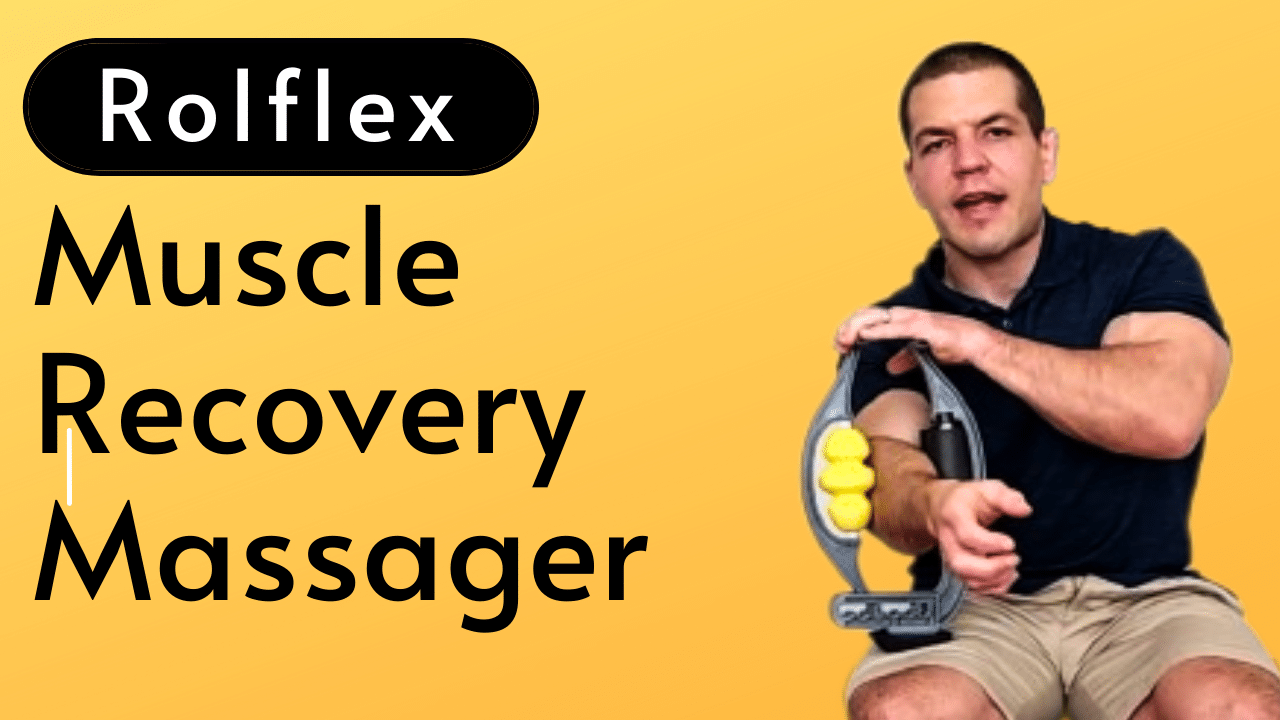This is a review of the Rolflex Muscle Recovery Tool. Hi, I'm Dr. Dave Candy, a board-certified specialist in Orthopedic Physical Therapy. In this video, I'll show you how this tool can help if you have stiff or sore muscles after a workout.
Who Is The Rolflex Muscle Massager Tool For?
The Rolflex Muscle Massager is particularly good for athletes after a hard workout where you've had some lactic acid buildup your muscles.
Lactic acid is what causes you to "feel the burn" whey you work out hard.
However, it also prevents your muscles from contracting appropriately.
Therefore, you don't want that lactic acid to stay in the muscle and start to develop knots or trigger points within your muscles.
The Rolflex Muscle Massager tool is a good way to help work that lactic acid out of your arm and leg muscles.
It's kind of like having a massage, but it's something that you can do at home or on the field or court or in the training room to release the lactic acid yourself.
How Do You Use The Rolflex Massager For Arms & Legs?
So, here's how you use the Rolflex massager:
You can see from the picture above that the Rolflex Massager is shaped like a set of pliers.
That way, you can adjust the tool for different width muscles in your arms and legs.
For example, set it to a a thicker width for your thighs and a thinner width for your calves or your forearms.
How To Use The Rolflex Massager On Your Forearms
To use the Rolflex Massager on your forearms, you just rest the pad at the base of the tool on your thigh.
Then you slide your forearm through the opening.
Using the Rolflex Massager for Golfer's Elbow
Now, using this yellow roller on the bottom of your forearm, it's a little bit more pinpointed. The black side is smoother, so it's more of a broad massage, whereas the yellow roller gets a little bit deeper into some of the specific trigger points on your forearm.
So, using the yellow roller on the palm side of your forearm would be more for something like a golfer's elbow where you have pain on the inside of your elbow.
Using the Rolflex Massager for Tennis Elbow
To use the Rolflex Massager for tennis elbow, you just flip the tool around.
Put the yellow part on the outside of your forearm, and then just roll back and forth like this.
You change the pressure by how hard you squeeze on the tool, as well as where you have the ratchet at the bottom of the tool adjusted.
So, if you bring the ratchet closer together, or if you squeeze harder with your hands, that's going to give you more pressure.
If you let some pressure off with your hands or you make the ratchet a little bit wider here, then it's not going to be quite as much pressure.
How To Use The Rolflex Massager On Your Legs
In addition to using the Rolflex massager on your arms, you can also use it on your legs. You'll just need adjust the tool to be a little wider.
Using The Rolflex Massager On Your Calves
You can also use the Rolflex Massager on your calves.
Just put the yellow part behind your calves. Make sure you've got the ratchet adjusted to a thickness that's appropriate for you.
Then squeeze the ends of the tool while rolling it up and down your calves.
Move around to the various spots where you feel knots or muscle soreness in your calve.
Using The Rolflex Massager On Your Thigh
You can also move the massager up to your thighs.
You want to have it set on a relatively wider width for your thighs.
Use the yellow part on the front of your thighs to help with stiff quadriceps.
Use the yellow part on the back of your thighs to help with stiff hamstrings.
Where To Buy The Rolflex Muscle Massager For Arms & Legs
So, that's the Rolflex Muscle Recovery Tool.
Again, it's good for recovering after a hard workout, and if you are interested in buying one for yourself, here's a link to buy the Rolflex Massager.
Rolflex Arm & Leg Massager - Forearm & C...
20% OffWhat Else Can Help Sore, Stiff Muscles?
If you have sore, stiff muscles, you want to find out the underlying cause of the the stiffness.
- Maybe it's overtraining.
- Maybe it's poor exercise technique.
- Maybe it's dehydration.
- Or maybe it's something else.
If you need help to find out what's causing your muscle stiffness and how to get it to prevent it from coming back, tap the button below to request an appointment with one of our specialist physical therapists.


